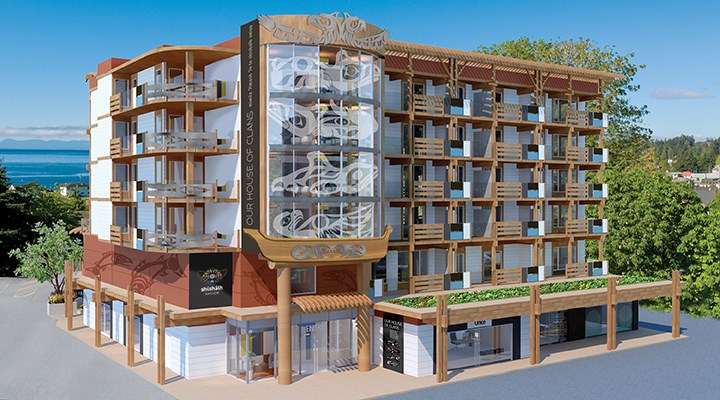It was long ago predicted that if the Sunshine Coast did not find a way to create affordable housing, workers in many key sectors would become so scarce that no one would be here to perform the most basic services. Are we there yet?
While we continue to ponder that question, and argue over the impact of Airbnbs and which level of government should be doing what for whom, First Nations in the region are taking serious steps to provide affordable housing for their members.
Squamish Nation has embarked on a plan to build more than 400 affordable homes at three locations – two in North Vancouver and a third in Squamish – after the proposal received overwhelming member support in a July 28 referendum.
Construction on the first 94 units will start in the fall. As North Shore News reported last weekend, it’s all part of a larger goal to house every Squamish Nation member within a generation and build a total of 1,000 units. To make it happen, council will take out low-interest government loans to fund construction.
Closer to home, shíshálh Nation has tapped the province for $9 million over three years under the Foundation Agreement to help pay costs related to the former SSC property in Porpoise Bay. Among other things, the land will be used to build and operate affordable, culturally appropriate housing, focusing on the needs of Elders and women and children.
Those units will be in addition to the 34 rental apartments planned for the six-storey Our House of Clans development at 5573 Sunshine Coast Hwy. Expected to be completed next spring, the units will range from studios to three bedrooms.
The nation is also going ahead with plans for a subdivision in Selma Park that will create building lots for 86 single-family homes, two duplexes and four fourplexes.
Faced with long and growing waiting lists for housing, both shíshálh and Squamish are moving in on solutions. They are leveraging every government dollar they can get, they are focused on actions, and they are pushing hard in directions set by their voting members.
There is no question that First Nation governance, authority and scale can afford certain advantages over the broader community, where the three levels of government seem to each take on a great deal and yet accomplish very little on the ground. But First Nations also have many unique challenges and constraints, and that isn’t stopping them from acting decisively in their people’s interests.
It’s a lesson our leaders need to learn if this housing crisis is ever going to end.



